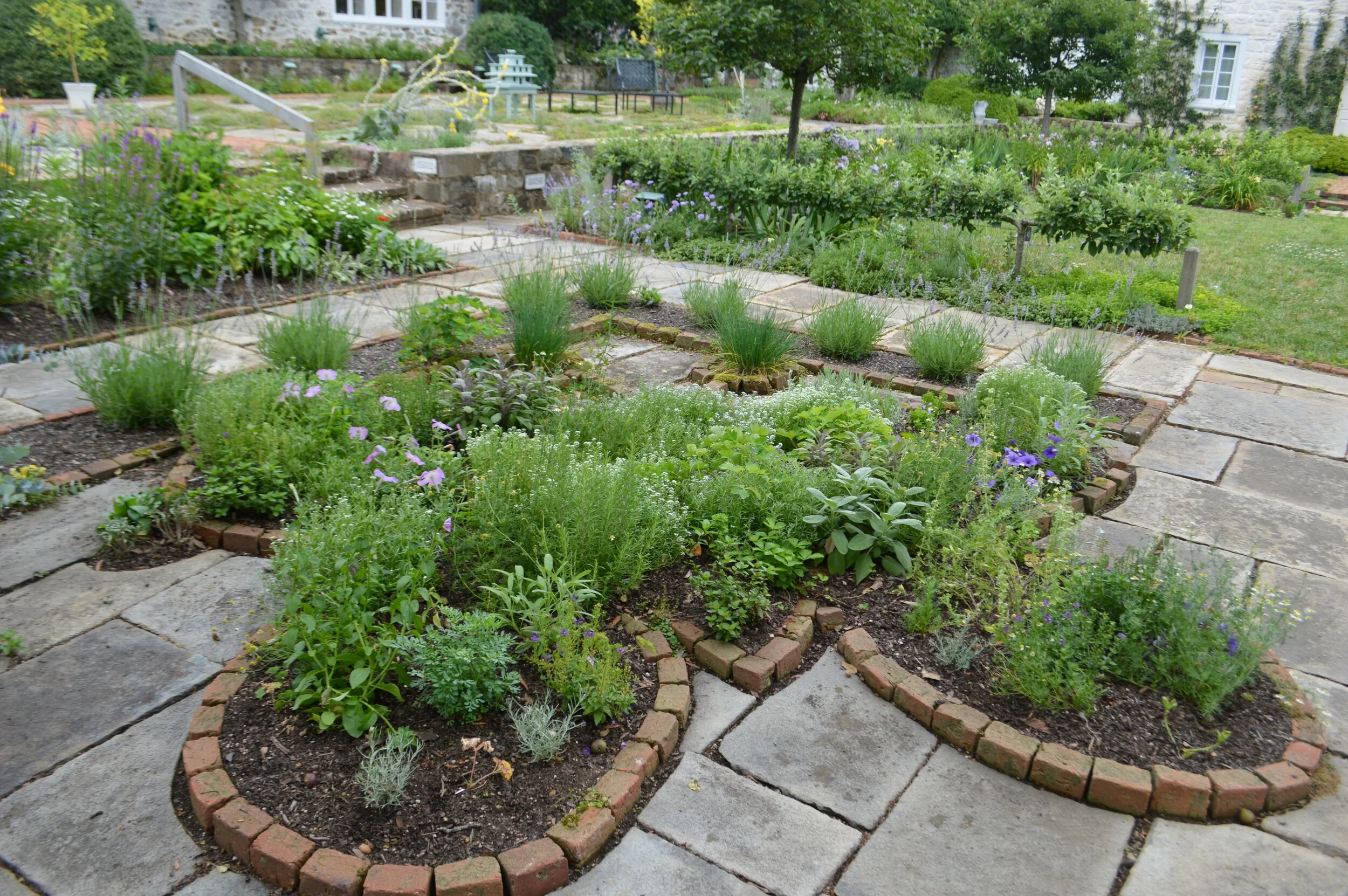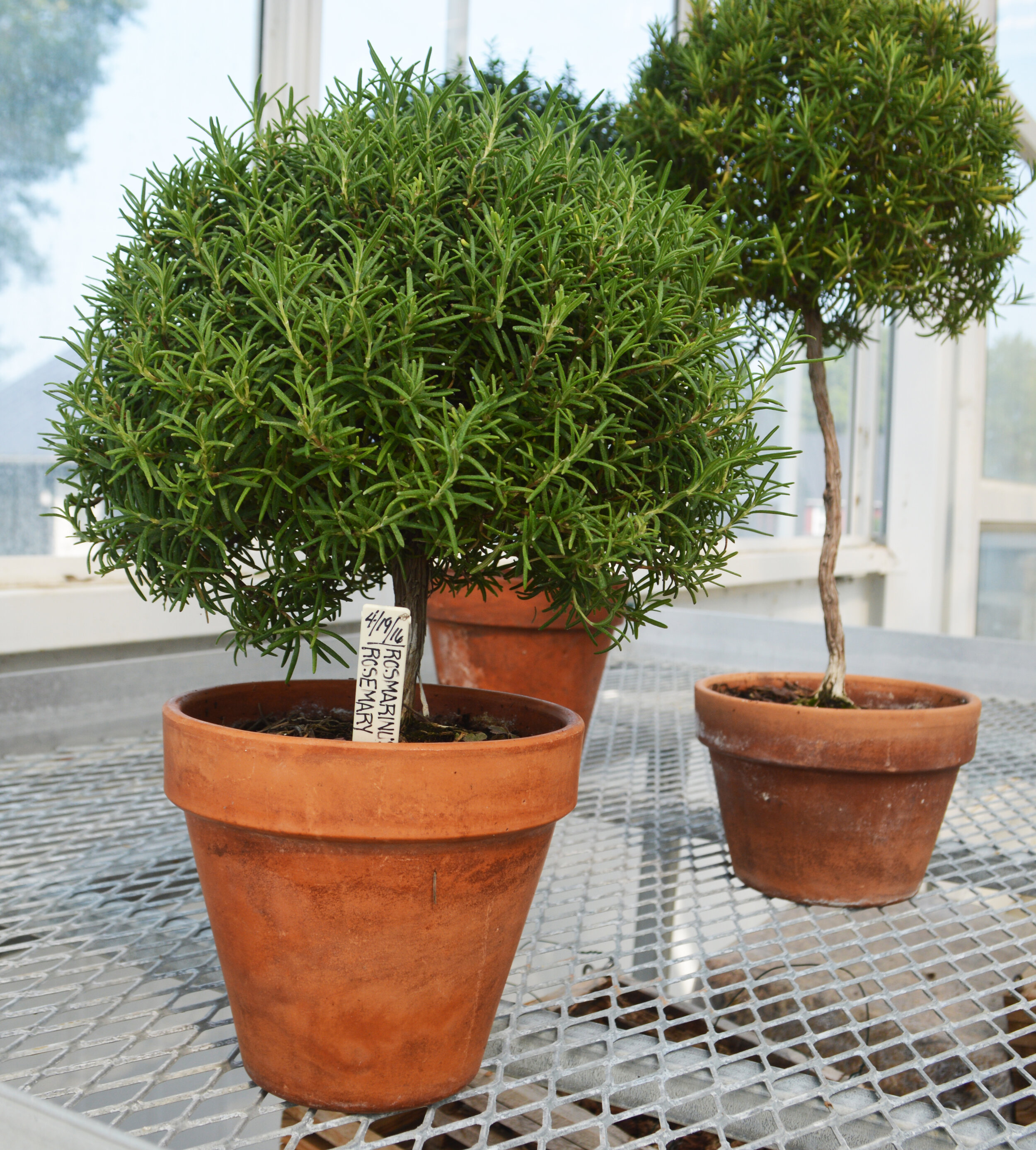7 Plants that Pests Hate
Emily Ellis
Summer means long and sultry days, bushy and verdant landscapes, and lots of pesky insects.
It’s also the season for abundant herbs - many of which can help keep annoying and disease-spreading pests away from plants, pets, and people, and are safer to use than potentially harmful pesticides.
From the thyme spreading from between the paving stones in the formal garden to the basil sprouting at the Biocultural Conservation Farm, the Oak Spring Garden Foundation is currently bursting with fragrant herbs. Some of these herbs are grown for culinary or aesthetic purposes, and some are grown as companion or deterrent plants to keep pests away and attract beneficial insects, such as pollinators and pest-killers like parasitoid wasps. (To learn more about integrated pest management at Oak Spring, visit this post from last year.)
The pungent smells and rich oils that make herbs so pleasant for humans often have the opposite effect on a range of pesky insects, including ticks, mosquitoes, and notorious plant-eaters like the squash vine-borer and the cabbage worm. Scroll down to read about several plants that keep the (bad) bugs at bay.
rosemary
Rosemary topiaries in Oak Spring’s production greenhouse.
One of the herbs used for Bunny Mellon’s signature miniature topiaries (or ‘herb trees’, as she called them), pungent rosemary is a turn-off for a variety of insects, including flies, plant-munchers like cabbage moths, and mosquitoes. Although it spreads rapidly once planted, it also does well in pots, meaning you can easily keep it contained and place it strategically in areas where you’d like bugs to buzz off. Essential oils made from this plant have also been shown to repel ticks - one of our most despised parasites here at Oak Spring - and even affect their reproduction and hatchability.
fleabane
Fleabane (and thyme - another pest repeller!) growing in the formal garden.
While the jury’s still out on whether this delicate wildflower lives up to its name, it is a member of the huge aster family, which includes other star pest-repelling plants like marigolds and mums.
Regardless of its pest-controlling abilities, it’s a beautiful addition to the landscape and a regular summer feature of Oak Spring’s garden, where the dainty flowers are allowed to sprout between the paving stones. Considered a weed by many due to its ability to thrive in less-than-ideal conditions, fleabane is found worldwide, with about 170 species native to North America. It likely first got its name in the Middle Ages in Europe, due to the belief that it could repel fleas and other pests if placed in a satchel or burned.
Lavender
Lavender growing in the formal garden.
It’s hard not to love lavender, another fixture of the formal garden, with its purple flowers and soothing fragrance. That strong odor comes from linalool, a compound that is as detestable to mosquitos as it is pleasant for humans. Much like DEET, a common chemical bug spray, linalool overloads mosquitoes’ olfactory organs, making it difficult for the insects to detect where to land and bite. As an added bonus, mammalian pests such as mice and deer will also give lavender a wide berth due to its strong odor (however, pollinators adore it!)
Lemongrass
BCCF-grown lemongrass stalks. Photo by Christine Harris
Ever wondered what the source of your zesty summer candles is? Citronella —a widely used natural mosquito repellent - comes from lemongrass, a fragrant culinary grass native to Asia. The strong oil derived from some lemon grass species masks the scents that mosquitoes use to hunt down their prey, keeping them away from people and animals.
Lemon grass isn’t the only herb with a citrusy scent that pests despite - lemon thyme is another great pest-repeller!
Marigolds
Marigolds growing in the kitchen garden.
Marigolds are not only beautiful and pollinator favorites, but have a solid reputation as a deterrent plant for garden pests. For this reason, they are often planted among crops as a guard against unwanted insects. While some pests, like aphids, will munch on marigolds (no plant is completely invincible), research has show that the plants are particularly useful at repelling nematodes. Many farmers and gardeners have also observed that pests including tomato hornworms, cabbageworms, squash bugs, and others will stay away from marigolds - one of the reasons why the BCCF Manager of Integrated Pest Management uses them as a deterrent plant.
chrysanthemums
Chrysanthemum ‘Sheffield Pink’ growing in the formal garden in 2020.
You’ve probably seen pyrethrum listed among the ingredients in dog shampoos, insect repellents, and some pesticides. This neurotoxin is derived from some chrysanthemum flowers, and can kill and repel ants, ticks, fleas, spider mites, roaches, Japanese beetles, and other pests. While it tends not to harm birds, the chemical is toxic to honey bees, so it’s best to use just the plants themselves for pest control.
While mums aren’t invincible to pests, there are a lot of insects that tend to stay away from them, including mosquitoes, ants, ticks, Japanese beetles, and spider mites. Mammalian pests like deer and rabbits avoid them as well, making them a great deterrent plant to place around a border.
basil
Basil growing in Oak Spring’s kitchen garden.
Everyone’s favorite pesto ingredient is also a fairly effective repellent against mosquitoes, flies, squash vine borers, and similar pests. (While we haven’t tried it out, some say that rubbing the oily leaves on your skin can even take the itch out of bug bites.)
Research has shown that some compounds in basil were “highly toxic” to mosquito larvae. It’s often used as a companion or deterrent plant on farms and gardens, keeping pests away from more vulnerable flowers or crops. Just prepare for it to spread - like many herbs on this list, basil likes a lot of room!
Honorable mention: plants in the mint family, thyme, alliums, petunias, pelargoniums, tansy, tobacco, nasturtiums, rue.
Banner image: the butterfly bed in Oak Spring’s Formal Garden, stuffed full of insect-repelling herbs for the summer!







